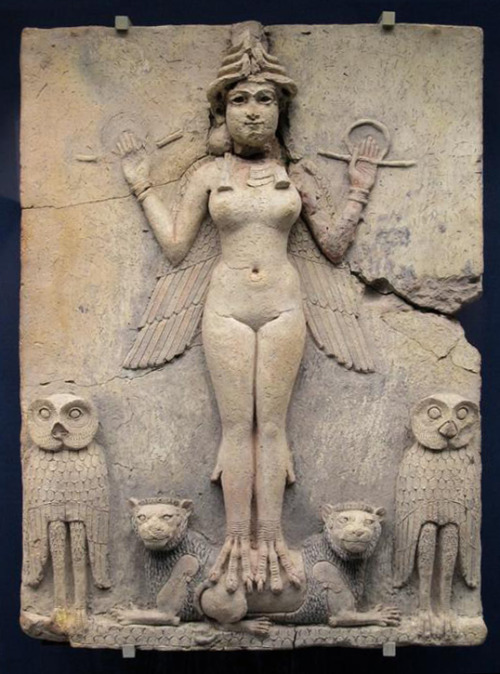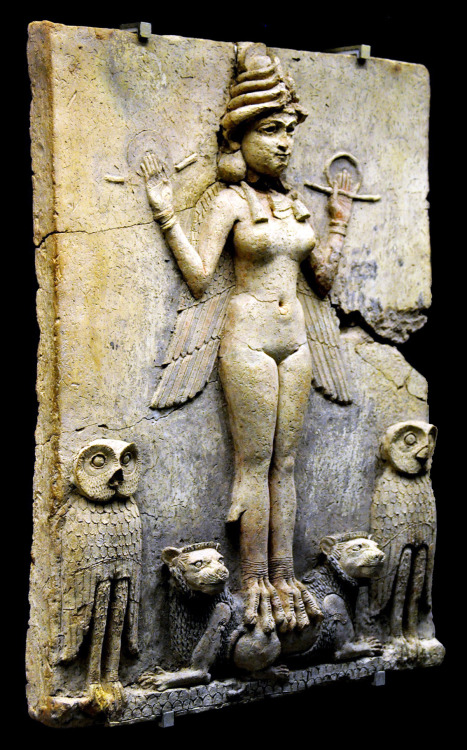fromthedust: The Queen of the Night also known as the Burney Relief is a high relief terracotta plaq
fromthedust: The Queen of the Night also known as the Burney Relief is a high relief terracotta plaque of baked clay. It originated in southern Mesopotamia (modern day Iraq) most probably in Babylonia, during the reign of Hammurabi (1792-1750 BCE) as it shares qualities in craftsmanship and technique with the famous diorite stele of Hammurabi’s laws and also with the piece known as `The god of Ur’ from that same period. The woman depicted in the relief is acknowledged to be a goddess as she wears the horned headdress of a deity and holds the sacred rod-and-ring symbol in her raised hands. Not only is the woman winged but her legs taper to bird talons (which seem to grip the lion’s backs) and she is shown with a dew claw on her calves. Along the base of the plaque runs a motif which represents mountains, indicating high ground. Who the winged woman is, however, has not been agreed upon though scholars generally believe her to be either Inanna (Ishtar), Lilith, or Ereshkigal (‘The Queen of the Great Below’ or ‘Lady of the Great Place’ - death). Once the piece was done baking and had cooled, it was painted with a black background, the woman and the owls in red, and lions in white with black manes. The rod-and-ring symbols, the woman’s necklace, and her headdress were gold. The original color traces may still be detected on the piece today even though they have largely worn away over the centuries. -- source link
Tumblr Blog : fromthedust.tumblr.com
#mesopotamia#artifacts

